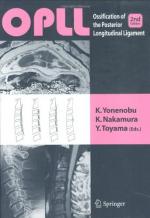|
This section contains 334 words (approx. 2 pages at 300 words per page) |
Ossification is a term that refers to the formation of bone. There are two kinds of ossification: intramembranous ossification and endochondral ossification. In both types, pre-existing connective tissue is replaced by bone. The two processes are distinguished by their mechanics.
Intramembranous ossification is concerned with so-called mesenchyme cells—cells that have the ability to differentiate into any number of structurally and functionally different tissues. In intramembranous ossification, some mesenchyme cells form osteoblasts, which function to produce bone. This type of ossification transforms membrane into bone. The bone formation occurs at the periphery, with layers of bone being laid down, analogous to the ring-like diameter growth of a tree. This type of growth is called appositional growth. An example of intramembranous ossification is the formation of the topmost area of the skull.
Endochondrial ossification involves the conversion of a type of cartilage called hyaline cartilage to bone. Hyaline cartilage is formed into a likeness of the future bone by cells called chondroblasts. This likeness is covered by a perichondrium. The perichondrium is a dynamic region., supplied with blood vessels and is thus capable of physiological activity. Cells in the perichondrium change to osteoblasts, which begin to produce a bony region in the middle area of the hyaline cartilage. The region becomes mineralized with calcium carbonate to form what is called calcified cartilage. Further activity in the calcified cartilage yields what is termed the primary ossification center. Over time, this central region lengthens, as the entire cartilage is lengthening. A full-length bone results, complete with bone marrow.
Endochondrial ossification can occur during embryonic development as increasingly firmer support is needed for the growing fetus, or can occur well into the teenage years, depending on the bone that is involved.
Ossification defects can occur during development of a fetus, with catastrophic effects. The use of angiotensin-converting enzyme (ACE) inhibitors as a means of controlling pregnancy-induced high blood pressure has been shown to decrease ossification, particularly of the skull. The resulting malformation can be lethal.
|
This section contains 334 words (approx. 2 pages at 300 words per page) |


